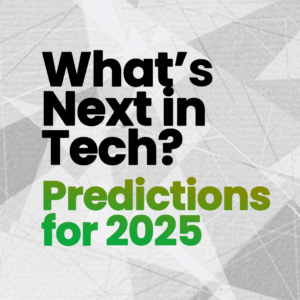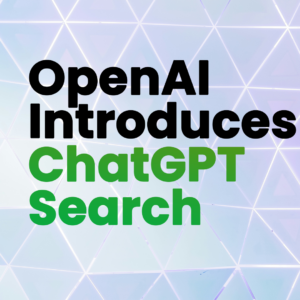AI Takes Center Stage: The Future Unveiled at SXSW 2025

SXSW 2025 in Austin was a whirlwind of innovation, showcasing how technology reshapes our world. From immersive historical experiences to AI-powered mobility aids, the conference highlighted the incredible potential and the critical considerations surrounding emerging technologies. I also summarized the conference in my TV appearance on Portland KATU.

Here’s a breakdown of the key trends that dominated the conversation.
Bringing History to Life with AR/VR
One of the most compelling experiences at SXSW was the fusion of history and immersive technology. Using AI and augmented reality, attendees could witness historical events in a way never before possible. I experienced a powerful demo that brought the 1906 Atlanta Race Riot to life, following a virtual journalist as they uncovered a buried truth. This experience, using AI animations, was a stark reminder of the power of technology to educate and evoke empathy.
Metallica in Apple Vision Pro
Apple showcased its immersive video capabilities with a Metallica concert experience for the Apple Vision Pro. Filmed during the band’s M72 World Tour in Mexico City, the experience features full performances of “Whiplash,” “One,” and“Enter Sandman.” Using 14 custom-built Apple Immersive Video cameras, they captured the energy of the event. If you don’t own a Vision Pro, Apple is offering demo appointments at Apple stores.
AI in Real-World Applications
AI’s practical applications were a major focus, demonstrating its potential to improve our lives and create a more sustainable future.
Xatoms
This company is leveraging advanced technologies in AI and quantum chemistry to address the critical issue of water purification. By identifying pollutants in water, they employ AI algorithms to discover potential molecules that can effectively target and neutralize these contaminants. Utilizing quantum chemistry, they then engineer innovative materials that harness sunlight to break down harmful substances, enhancing the purification process. To further their mission, they are actively seeking partners, investors, and collaborators to join them in their efforts.
Glide
This AI-powered mobility aid is specifically designed to assist individuals who are blind or have low vision in navigating their surroundings with confidence. By autonomously guiding users, it effectively avoids obstacles and ensures that they remain on a safe path, enhancing their overall mobility and independence.
NeuralGarage
A company has developed innovative generative AI technology designed to synchronize the lips and jaws of actors with dubbed audio, effectively tackling the issue of “Visual Dissonance” often seen in translated dialogue. This advancement promises to enhance the viewing experience by ensuring that the on-screen performances align seamlessly with the audio, creating a more immersive and authentic experience for audiences.
Autonomous Vehicles
Self-driving cars took center stage at SXSW, showcasing the advancements in autonomous vehicle technology. Waymo and Uber both offered robotaxi services, allowing attendees to experience the convenience of rides without drivers. Additionally, Mozee autonomous shuttles provided transportation to conference goers, further highlighting the growing presence and integration of autonomous vehicles in everyday life.
AI and Diversity
Will.i.am recently introduced FYI.AI, an innovative app that utilizes AI personas to develop relatable digital assistants featuring diverse cultural representations. This launch has ignited discussions about the vital role of inclusivity in AI development. The platform is dedicated to creating digital assistants that resonate more deeply with users by reflecting a wider range of experiences and backgrounds.
Addressing Bias and Risk
Multiple panels emphasized the importance of “red teams” in identifying and mitigating biases in AI systems. One notable study from China highlighted how a red team discovered that an AI used in self-driving cars was failing to recognize pink parking spaces designated for female passengers. This crucial finding prompted adjustments to the AI’s programming, showcasing the significance of ongoing evaluation and oversight in the development of fair and effective AI technologies.
AI as a Transformative Tool: Panels with the Experts
IBM CEO Arvind Krishna emphasized that while AI is a powerful tool, it should not be viewed as a universal solution to every problem. He urged companies to adopt a strategic approach to its implementation, ensuring that AI is used in ways that are thoughtful and aligned with their specific needs.
Futurist Ian Beacraft emphasized the importance of organizations rethinking their team structures and workflows to successfully integrate generative AI. He highlighted that adapting to these advanced technologies requires a fresh approach to collaboration and task management, ensuring that teams can leverage AI effectively while fostering innovation and efficiency within their processes.
Democratization and Accessibility
Another crucial theme was making AI more accessible. Panels highlighted efforts to empower smaller organizations and individuals. New frameworks were introduced to simplify the development of sophisticated AI applications, which is a huge step. However, along with this push for accessibility came serious discussions about ethical concerns. Privacy and inclusivity in AI design were at the forefront because increased access has to be paired with responsible development.
The Bigger Picture
SXSW 2025 underscored AI’s growing influence across various sectors. The conference also highlighted the importance of ethical considerations, including privacy, inclusivity, and the need to address potential biases. The discussions surrounding AI’s role in community building and accessibility showed that while the technology is powerful, its impact on society depends on how we choose to use it.


